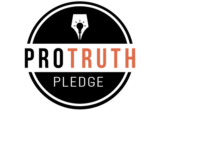
What does it take to be a truly good person? An easy and simple answer is not hurting other people and doing good deeds to help others, especially by giving to charity.
Yet this simple answer is unfortunately too good to be true. Being a truly good person is harder than it seems. It involves not only avoiding doing the things that you know are wrong by hurting other people. In fact, that’s the easy part. We all know we generally shouldn’t lie, cheat, and steal.
The harder part is knowing how to do good deeds well. There are millions of charities out there. Some charities are hundreds of times better than others at doing good by addressing suffering and increasing flourishing around the world.
So what does that mean for your donations? Well, every time you donate, you make a choice of how much good you want to do with your money. By making a donation, you are using your money to produce a certain amount of “good” in the world. By donating to a less effective charity, you are doing less good. This concept is known as opportunity cost in economics.
Don’t believe me? Let’s work through a specific example. Say you have two charities whose goal is to save children’s lives. Charity A spends $20 million per year to save 100 children from cancer. It therefore saves 1 life at a cost of $200,000. Let’s take a second charity – Charity B – that saves children from a deadly tropical disease, such as Against Malaria Foundation. Research shows that it takes this charity just under $3,000 to save a life, which means that for $20 million, it can save over 6600 children! By using the metric of cost-effectiveness in saving lives, we can see that Against Malaria Foundation is 66 times as good as Charity A. Cost-effectiveness is the crucial metric to use in evaluating how much good we can do with our money, since that’s how we can measure the amount of good per dollar.
Let’s look at another example. Make-A-Wish foundation helps terminally ill children fulfill one grand wish. For instance, it can take a child to Disneyland to be a princess for a day, or help the child be a police officer or fighter pilot for a day, or another grand wish. Make-A-Wish has great stories that draw at people’s heartstrings, and move them to donate over $300 million per year to this organization. Make-A-Wish spends over $10,000 on one wish, and the outcome, in terms of good done, is a child and the child’s family having one day of joy.
By comparison, GiveDirectly does direct cash transfers of $1,000 to poor people in East Africa. For that amount of money, a family with several children transforms its life. It can build a house and buy crops. Its children can go to school. They are healthier, physically and mentally. According to rigorous research, the recipients of these cash transfers have substantially better lives. Giving money to GiveDirectly results in much more joy being created in the world than giving to Make-A-Wish. Yet many more people donate to Make-A-Wish, because they fall for the narrative fallacy, our tendency to like and believe in something just because it has a good story associated with it – of addressing the wishes of terminally ill children – as opposed to achieving our actual goals of being a truly good person.
So how can you give effectively do the most good that you can per dollar? Fortunately, there are high-quality nonprofit charity evaluators that serve as consumer report organizations to help donors choose the most cost-effective charities. The Life You Can Save uses a rigorous selection methodology to recommend a number of charities oriented toward poverty reduction. It has an impact calculator to help donors see the specific impact of their giving. GiveWell provides in-depth research reports on top charities focused on reducing poverty. Both The Life You Can Save and GiveWell give high marks to GiveDirectly and Against Malaria Foundation. Another charity evaluator, Animal Charity Evaluators, gives recommendations on the most effective charities to prevent animal suffering. It has recommended The Humane League, Mercy For Animals, and Animal Equality, and you can see its current top picks here. Giving What We Can unites a community of people dedicated to giving 10 percent or more of their money to effective charities. Finally, Intentional Insights provides articles, videos, and other content to help you make wise decisions about your donations.
So while being a truly good good person is harder than it might seem, it’s certainly doable. Just make sure to do the most good that you can, as well as avoiding things that you know you shouldn’t do! The organizations listed above will help guide your way in doing so.




